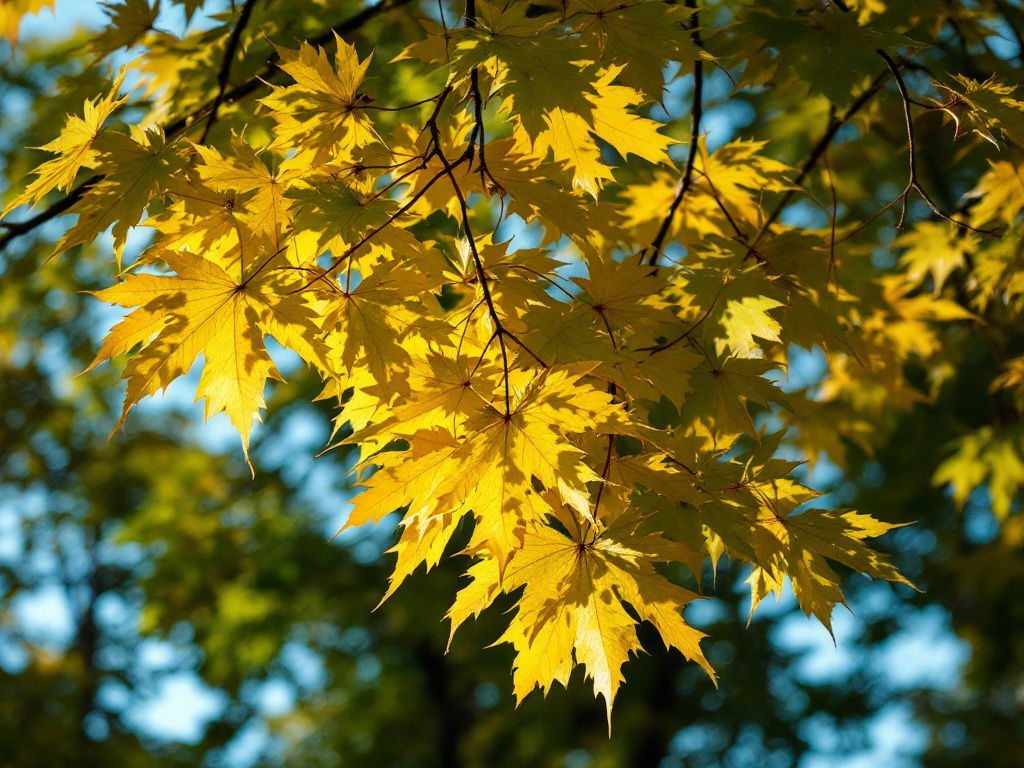Image generated by flux-ai.io & content generated by ChatGPT Version 4o-mini
Franklin County Residents: What You Need to Know About Silver Maples
As the leaves start to turn and fall, many Franklin County residents might find themselves raking up a familiar sight—the bright yellow leaves of the silver maple tree. Known scientifically as Acer saccharinum, this tree is common across Florida and has some interesting traits that might just make you think twice about where to plant one.
The Silver Maple: A Quick Overview
Silver maples are tall trees, reaching heights of 60 to 80 feet. They have a characteristic vase shape and are known for their rapid growth, making them a popular choice for providing quick shade in backyards and parks. However, while these trees can be beautiful additions to our landscapes, they also come with a few challenges, particularly for homeowners and local gardeners.
Benefits and Challenges
One of the silver maple’s biggest advantages is its ability to grow in areas where many other trees won’t. This makes them ideal for spots with poor drainage, such as those found near the Apalachicola River. However, their roots tend to grow close to the surface, which can create challenges for mowing lawns and planting under their branches. Homeowners may find themselves battling with these roots if they grow into septic systems or break through water and sewer pipes, leading to costly repairs.
Additionally, silver maples produce a lot of leaves in the fall, which means plenty of raking for residents. While the tree’s yellow foliage is lovely, the sheer volume can be a chore. Therefore, careful consideration should be given to the placement of these trees to minimize maintenance efforts.
Pruning for Strength
To keep silver maples healthy and reduce the risk of branch breakage during storms, regular pruning is essential. This involves trimming back the branches to keep them smaller than half the trunk’s diameter. This practice not only helps the tree grow stronger but also keeps your yard looking neat and tidy. It is crucial to make good cuts to ensure the tree’s health and longevity, as improper pruning can lead to decay and other issues.
Local Implications
For residents of Franklin County, where the population is aging and many families are looking to enhance their yards, understanding the characteristics of silver maples can help in making informed landscaping choices. With a mix of young families and older residents, creating a safe and enjoyable outdoor space is important. While these trees can provide shade and beauty, it’s crucial to consider their maintenance needs and potential issues, particularly in a region that may experience heavy rain and storms.
Alternatives to Consider
If you’re contemplating adding trees to your property, you might also want to explore other species that offer similar benefits without some of the drawbacks. Other trees, like the live oak or southern magnolia, can provide strong canopies with less hassle regarding root systems and maintenance. These alternatives may also be better suited for the local climate and conditions, thus reducing the need for extensive upkeep.
Conclusion
As we embrace the changing seasons in Franklin County, the silver maple can be a remarkable choice for certain areas. Just remember to keep an eye on those roots and branches! With the right care, these trees can continue to grace our community with their beauty for years to come, providing shade, color, and a connection to nature that enriches our lives. Whether you’re enjoying a cool breeze under their canopy or managing the autumn leaf fall, understanding this tree can help you make the most of your outdoor spaces while adhering to good landscaping practices.
References
ENH-207/ST048: Acer saccharinum: Silver maple. (n.d.). Ask IFAS – Powered by EDIS. https://edis.ifas.ufl.edu/publication/ST048

